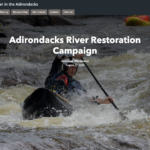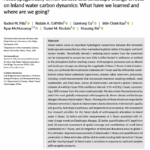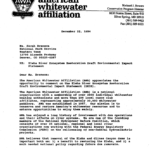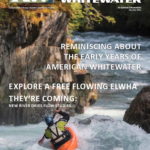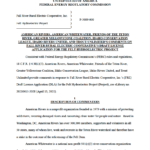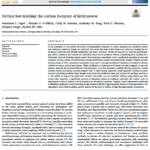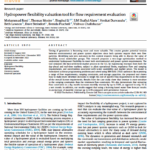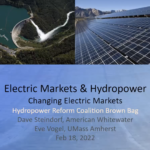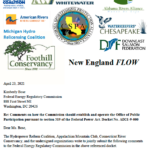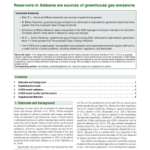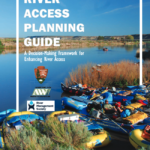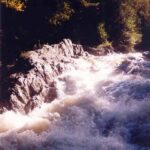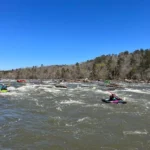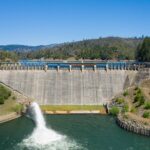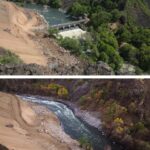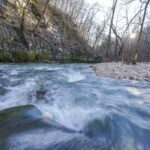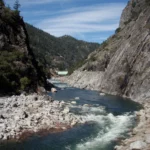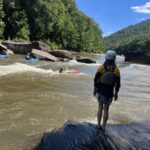Organization scope
Contact
Kevin Colburn(866) 262-8429
info@americanwhitewater.org
Resources from American WhitewaterAll resources
| Example filings and case studies 8/25/2019 |
| Articles, fact sheets, reports › Topic › Reservoir Emissions 7/20/2022 |
| Videos 2/10/2011 |
| Topic › Decommissioning and removal › Example filings and case studies 12/22/1994 |
| Topic › Decommissioning and removal 11/1/2013 |
| Example filings and case studies 7/2/2021 |
| Articles, fact sheets, reports › Topic › Reservoir Emissions 7/1/2022 |
| Collaboration & Negotiation 7/14/2025 |
| National › Topic › Guides, Presentations, Trainings › Natural, Cultural & Recreational Resources › Tribal Resources 1/18/2022 |
|
Articles, fact sheets, reports 12/6/2022
Hydropower flexibility valuation tool for flow requirement evaluation |
| Guides, Presentations, Trainings › Facility Types - Operations, Economics 2/18/2022 |
| Topic › Decommissioning and removal › Videos 1/1/2007 |
| Topic › Decommissioning and removal › Videos 11/17/2017 |
| Videos 1/1/2000 |
| Example filings and case studies 4/23/2021 |
| Topic › Decommissioning and removal › Videos › Tribal Resources 10/30/2022 |
| Videos 8/12/2008 |
|
Articles, fact sheets, reports › Topic › Reservoir Emissions 10/1/2022
Report: Reservoirs in Alabama are Sources of Greenhouse Gas Emissions |
| Topic › Decommissioning and removal › Videos 3/12/2020 |
| Example filings and case studies › Guides, Presentations, Trainings 2/1/2021 |
News and updates from American WhitewaterAll news
|
3/28/2024
Wells River (VT) Whitewater Access to be Improved under New FERC License The new hydropower license for the Newbury Hydroelectric Project on the Wells RIver in Vermont requires access impovements to the whitewater takeout. Home to the Wells River Rumble, the new access will improve the current boater take-out — a steep, narrow, poison ivy covered goat path. Under the new 40-year license issued by the Federal […] |
|
3/6/2024
California 2024 Recreational Releases Annually, American Whitewater starts the paddling year by confirming recreational release dates negotiated with hydropower projects across California like those operated by Pacific Gas & Electric (PG&E) and Sacramento Municipal Utility District (SMUD). Here is what we have on tap so far for 2024. A reminder that all confirmed recreational releases can be viewed on […] |
|
11/27/2023
Great Falls of the Catawba Good and Getting Better! (SC) By: Kevin Colburn We are happy to share a few updates on the Great Falls of the Catawba that we think you’ll enjoy as we reflect on the river’s first year of restored flows. First and foremost the first season was very successful with lots of happy visitors, consistent flow operations, and relatively few safety […] |
|
11/17/2023
Utility Releases Fast-Track Plans for Removing Dams on California’s Eel River The removal of two dams blocking Northern California’s Eel River is one step closer to happening. On November 17, Pacific Gas and Electric Company (PG&E), the owner of the dams, released its initial draft plan for dismantling the Scott and Cape Horn dams and relinquishing its license for the 113-year-old Potter Valley Hydroelectric Project. |
|
11/9/2023
An Important Milestone on the Klamath – Removal of the Copco 2 Dam Complete! Crews spent October putting the final touches on the removal of the Copco No. 2 Dam on California’s Klamath River, removing the remaining diversion infrastructure, grading the river channel, and performing erosion control. Deconstruction of the dam structure was completed in September. This work prepares the river canyon for consistent river flows, something which the river canyon below the dam hasn’t seen in 98 years. Restored flows in this reach will provide new whitewater boating opportunities on a section of river that has been dewatered and inaccessible to the public. Only a handful of boaters have ever been able to experience this run. |
|
11/9/2023
A Vision for the Future of the Lower White Salmon River (WA) The Lower White Salmon Coalition, formed in 2016, is releasing its Vision Plan for the approximately five hundred acres of land owned by PacifiCorp along the lower White Salmon River representing the former project lands for the Condit Hydroelectric Project. For whitewater boaters this includes the Lower Gorge from Buck Creek to the Columbia River. |
|
10/25/2023
Urge Congress to Repair the Clean Water Act You might want to tighten those nose clips and buy some earplugs: earlier this year the Supreme Court ruled on a long running legal dispute about which streams and wetlands the Clean Water Act actually protects from pollution – and it’s not good. Their decision, which ignored even the most basic science, stripped protections for an estimated 50% of streams and 70% of wetlands that had been protected since the 1970s. |
|
10/25/2023
American Whitewater Appeals FERC Dam Removal Refusal American Whitewater filed a legal appeal of the Federal Energy Regulatory Commission’s (FERC’s) decision to allow the owner of a failed hydropower project on the Salmon Falls RIver, which forms the Maine and New Hampshire border, to abandon its deadbeat dams. The appeal, filed in the D.C. Circuit Court of Appeals, argues that dam […] |
|
10/11/2023
PG&E Proposal Impacts 500 Miles of CA Rivers Pacific Gas & Electric (PG&E) operates 22 hydropower projects on 500 river miles across California that American Whitewater has spent nearly 30 years of work to protect and restore. This includes whitewater reaches on the North Fork Feather, the Pit, the McCloud, Butte Creek, Fordyce, the South Yuba, the Bear, the Eel, the Mokelumne, the San Joaquin and the North Fork Kings. Now, in an application before the California Public Utilities Commission (CPUC), PG&E is proposing to transfer all non-nuclear assets including these 22 hydropower projects to a new and separate subsidiary, Pacific Generation LLC (PacGen). |
|
8/31/2023
New EPA Rule Greatly Reduces Clean Water Act Protections Earlier this week the Environmental Protection Agency (EPA) issued a new federal rule that eliminates protection for a majority of our nation’s wetlands and estimated totals of well over a million miles of streams. The rule aligns the law with a recent Supreme Court Case that limited the kinds of wetlands and streams that can be covered by the Clean Water Act, known as Waters of the United States, or WOTUS. American Whitewater joined an amicus brief in that pivotal court case, advocating for the science-based protection of these streams and wetlands, but the Supreme Court ruled against us. |


